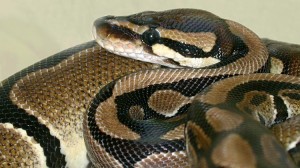Even though most of the snakes in North America are not poisonous they can trigger allergic reactions in many people. Thousands of people are sufferers of snake bites, with trekkers and people living in the wilderness being the most susceptible to snake bites.
Make sure you are safe from poisonous snakes such as rattlesnakes, water moccasins, coral snakes, copperheads, vipers and cobras as their bites can be deleterious to the human health and may cause death.

You can recognize a poisonous snake with the following characteristics:
- Coral snakes: triangular heads, depression in the middle between the nostril and the eye on both sides of the head-also known as pit vipers. All snakes have eyes like slits except coral snakes. Coral snakes have yellow, black or red rings on their bodies.
- Rattlesnakes: their bodies end with rattles.
- Water moccasins: a white, cotton-like lining of the mouth.
Caution
If you ever see a snake, do not be shocked or afraid and do not try to harm it. Simply back away slowly without notifying the snake as many snakes bite you when you bother them or invade their territory.
Symptoms
- Bite marks
- Bleeding
- Swelling
- Burning sensation
- Profuse sweat
- Clouded vision
- Diarrhea
- Numbness
- Increased thirst
- Nausea and vomiting
- Impaired muscle coordination
- Fever
- Rapid heartbeat
- Seizures
- Dizziness
- Weakness
- Unconsciousness
Treatment
If the symptoms of snake bite begin to appear, seek medical attention immediately. Till help arrives, follow these steps:
- Relax, stay calm and do not panic.
- Do NOT try to capture the snake or harm it as it may attack again. However, it will be wise if you remember the special features of the snake: its color, body patterns, facial features etc.
- Immobilize the affected region and stay calm and quiet to prevent the poison from radiating towards other regions of the body.
- Loosen any tight clothing and remove any jewelry.
- Position the affected region below heart level, if practical.
- Clean the wound but don’t rinse it. You may use a clean cloth to do so and use sterile gauze or a clean cloth to cover the wound.
- Secure the affected region with a splint to immobilize it and limit movement. Make sure the splint is kept loose so that blood flow is not disturbed.
- Do NOT apply ice to the wound.
- Do NOT try to cut the wound.
- Do NOT try to remove the venom by sucking or applying pressure on the affected region.
- Do NOT drink fizzy beverages, caffeine or alcohol.
Learn More
To learn more about snake bites and other environmental emergencies and how to manage victims take a St Mark James first aid class. We are partnered with the leading providers throughout Canada which are listed in our “locations” page. Our providers are located in Calgary, Edmonton, Vancouver, Winnipeg, Saskatoon, Regina, Ottawa, Toronto, Red Deer, Victoria and Halifax.
Related Video on Snake Bites
http://www.youtube.com/watch?v=SJiJ1qCBz-Y
